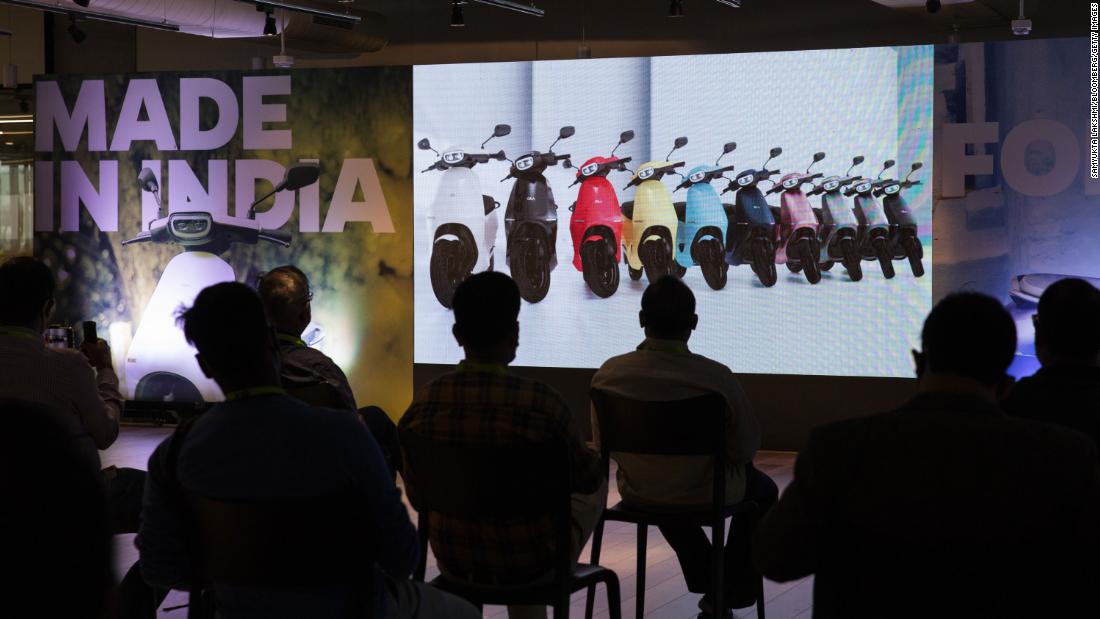The plant will be “the world’s largest women-only factory and the world’s only all-female auto manufacturing plant,” according to the blog.
The move is part of a series of efforts by the company to help create a more inclusive workforce and provide economic opportunities for women, Aggarwal said. “For India to be the global manufacturing hub, we must prioritize upgrading skills and creating jobs for our female workforce,” he added, citing a study that showed gender parity in the workforce can increase India’s GDP by 27%.
When the Ola Electric plant is fully built and ready for operation at the end of next year, it is expected to have the capacity to produce 10 million electric scooters per year.
India faced a record drop of nearly 24% in gross domestic product from April to June 2020, and unemployment in the country has been particularly high due to the economic slowdown linked to the pandemic. India experienced its first recession in decades last year. Although the country is still grappling with the pandemic, vaccines are helping the economy rebound. India’s GDP grew just over 20% in the three months to June 30.
Ola Electric’s parent company, Softbank-backed giant Ola, has announced plans to launch a first public offering next year. Ola also secured a $ 500 million investment from Temasek and Plum Wood Investment Ltd, a subsidiary of Warburg Pincus.
Aggarwal told CNBC last month that he wanted Ola and Ola Electric to eventually go public.
“Both companies will go public in due course. Ola will obviously go public sooner, it’s a more mature company – next year, but we don’t have a final date to share with everyone,” Aggarwal added. .
Ola Electric launched their scooter earlier this summer, teasing the official announcement with a video of Aggarwal driving around Bangalore. The company recently hired Jose Pinheiro, the former vice president of manufacturing at General Motors, to head global manufacturing and operations for its electrical business.
